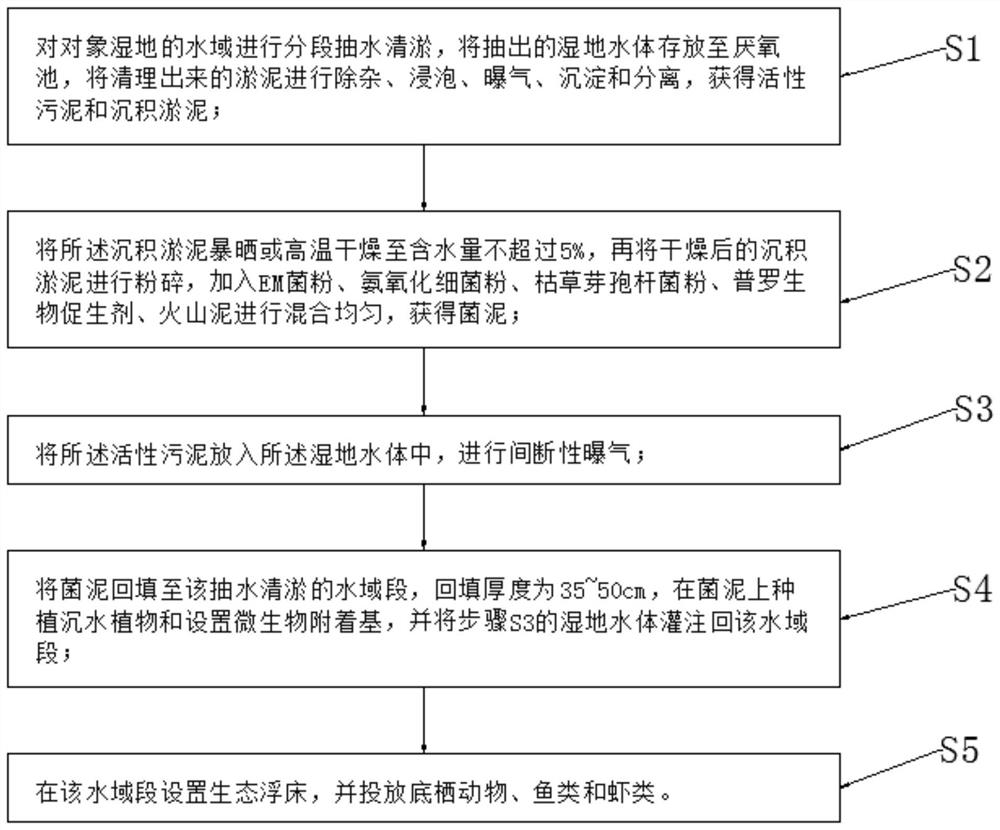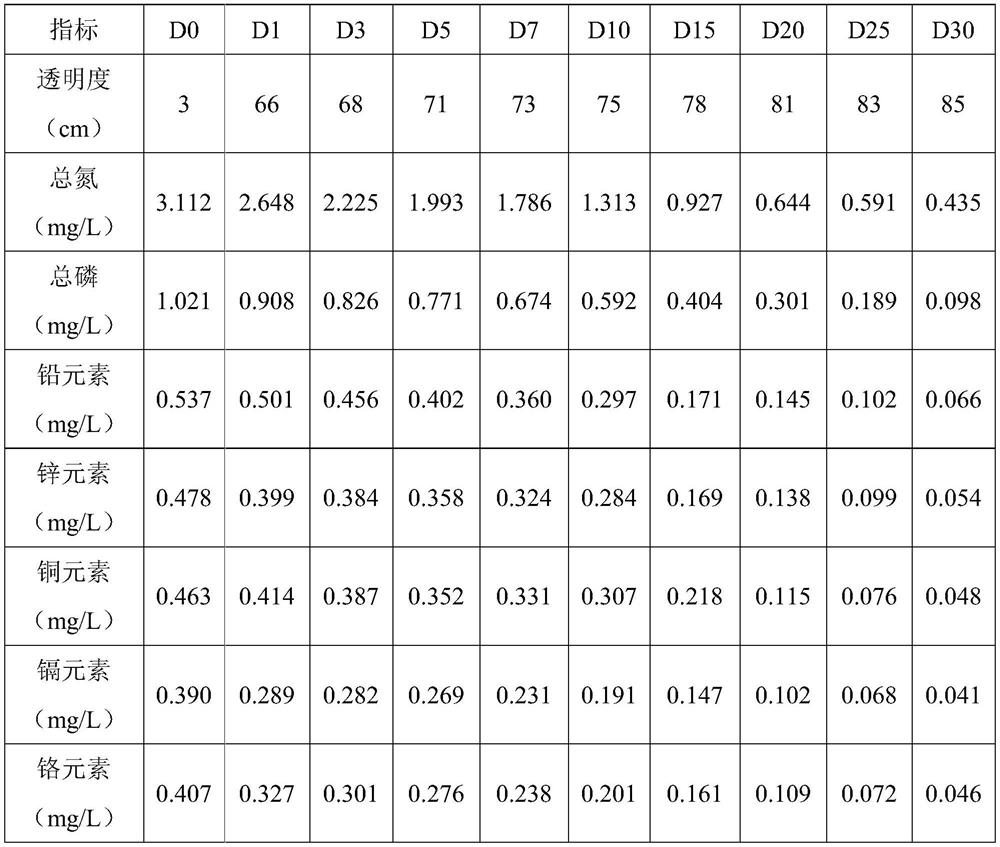A wetland ecosystem restoration method
A technology for ecosystems and restoration methods, applied in chemical instruments and methods, sustainable biological treatment, biological water/sewage treatment, etc., can solve problems such as prolonged pollution, achieve the effect of improving water quality and maintaining ecological balance
- Summary
- Abstract
- Description
- Claims
- Application Information
AI Technical Summary
Problems solved by technology
Method used
Image
Examples
Embodiment 1
[0032] A wetland ecosystem restoration method, comprising the steps of:
[0033] Step S1: Carry out segmental pumping and dredging of the water area of the target wetland, store the pumped wetland water in an anaerobic tank, remove impurities from the cleaned sludge, add water to soak and aerate for 24 hours, and the aeration intensity is 15L / m2 , part of the sludge is precipitated, part of the flocculent sludge is suspended in the water, and the precipitated sludge and the suspended sludge are separated to obtain activated sludge and sedimentary sludge;
[0034] Step S2: Dry the sediment sludge at 60°C for 30 hours at high temperature until its water content does not exceed 5%, then crush the dried sediment sludge to a particle size of no more than 100mm, and mix EM bacteria powder, ammonia oxidizing bacteria powder, and Bacillus subtilis Bacteria powder and Puro biological growth promoter were diluted 150 times with water respectively, and then fully mixed with a volume rat...
Embodiment 2
[0040] A wetland ecosystem restoration method, comprising the steps of:
[0041] Step S1: Carry out segmental pumping and dredging of the target wetland waters, store the pumped wetland water in an anaerobic tank, remove impurities from the cleaned sludge, add water to soak and aerate for 24 hours, and the aeration intensity is 10L / m 2 , part of the sludge is precipitated, part of the flocculent sludge is suspended in the water, and the precipitated sludge and the suspended sludge are separated to obtain activated sludge and sedimentary sludge;
[0042] Step S2: Dry the sediment sludge at 60°C for 30 hours at high temperature until its water content does not exceed 5%, then crush the dried sediment sludge to a particle size of no more than 100mm, and mix EM bacteria powder, ammonia oxidizing bacteria powder, and Bacillus subtilis Bacteria powder and Probio-growth promoting agent were diluted 100 times with water respectively, and then fully mixed at a volume ratio of 2:1:1:1 t...
Embodiment 3
[0048] A wetland ecosystem restoration method, comprising the steps of:
[0049] Step S1: Carry out segmental pumping and desilting of the water area of the target wetland, store the pumped wetland water in the anaerobic tank, remove impurities from the cleaned sludge, add water to soak and aerate for 22 hours, and the aeration intensity is 12L / m 2 , part of the sludge is precipitated, part of the flocculent sludge is suspended in the water, and the precipitated sludge and the suspended sludge are separated to obtain activated sludge and sedimentary sludge;
[0050] Step S2: Expose the sediment sludge to the sun at 40°C for 72 hours until its water content does not exceed 5%, then crush the dried sediment sludge to a particle size of no more than 100 mm, and mix EM bacteria powder, ammonia oxidizing bacteria powder, and Bacillus subtilis After the powder and the probiotic growth-promoting agent were diluted 200 times with water respectively, they were fully mixed with a volu...
PUM
| Property | Measurement | Unit |
|---|---|---|
| pore size | aaaaa | aaaaa |
| porosity | aaaaa | aaaaa |
Abstract
Description
Claims
Application Information
 Login to View More
Login to View More - R&D
- Intellectual Property
- Life Sciences
- Materials
- Tech Scout
- Unparalleled Data Quality
- Higher Quality Content
- 60% Fewer Hallucinations
Browse by: Latest US Patents, China's latest patents, Technical Efficacy Thesaurus, Application Domain, Technology Topic, Popular Technical Reports.
© 2025 PatSnap. All rights reserved.Legal|Privacy policy|Modern Slavery Act Transparency Statement|Sitemap|About US| Contact US: help@patsnap.com



